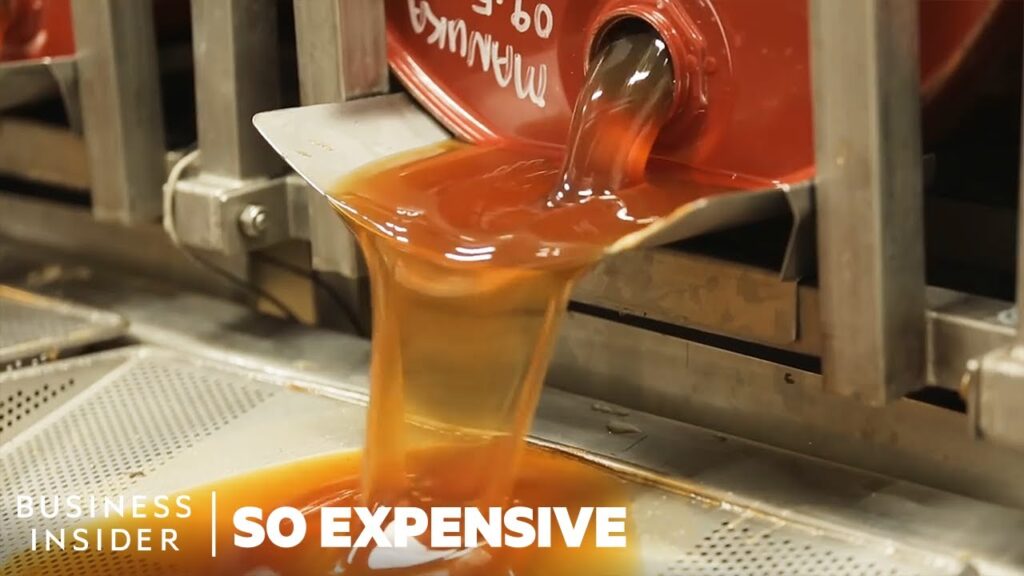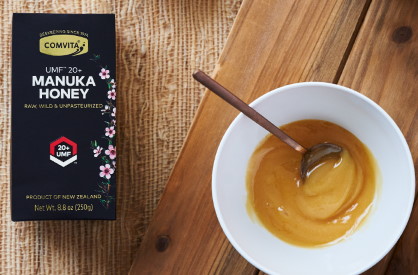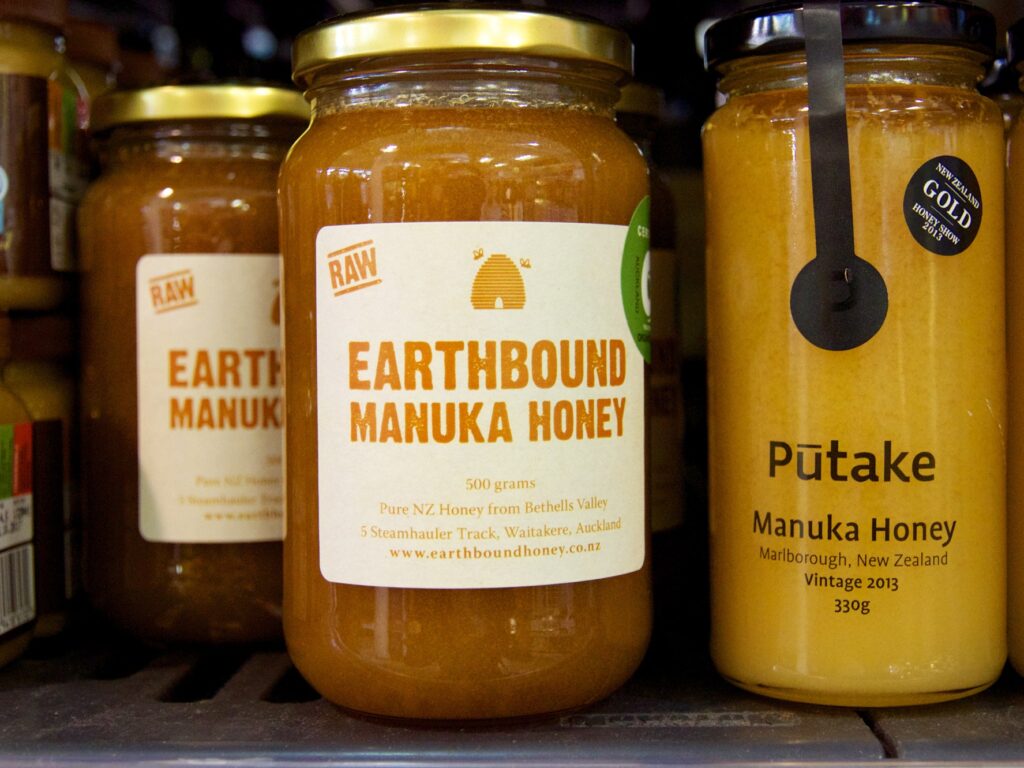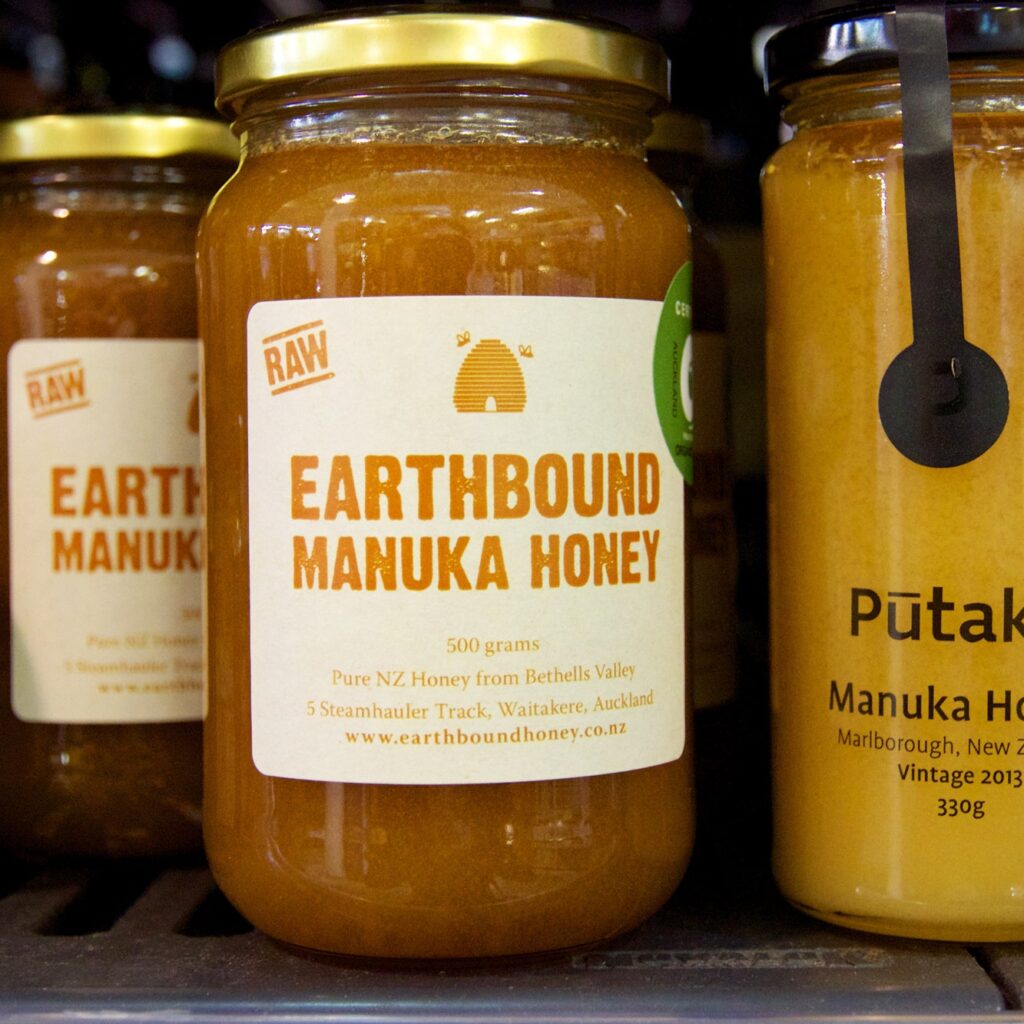
Have you ever wondered why manuka honey is so expensive? This exceptional type of honey, derived from the nectar of the manuka tree blossoms in New Zealand, has gained quite a reputation for its unique health benefits and exquisite flavor. However, its scarcity and the intricate process of production contribute significantly to its high price tag. In this article, we will explore the fascinating reasons behind the cost of manuka honey and why it remains highly sought after by honey enthusiasts around the world.

Unique Properties of Manuka Honey
Medicinal Benefits
Manuka honey is renowned for its exceptional medicinal properties. It has been used for centuries in traditional medicine for treating various ailments and promoting overall health. The unique composition of manuka honey, including its high enzyme content, makes it an effective natural remedy for wounds, sore throats, digestive issues, and skin conditions. Its antibacterial and anti-inflammatory properties can help alleviate symptoms and accelerate the healing process.
High Antibacterial Activity
One of the most remarkable properties of manuka honey is its high antibacterial activity. This is due to the presence of a compound called methylglyoxal (MGO), which is found in higher concentrations in manuka honey compared to other types of honey. MGO is responsible for the honey’s potent antibacterial effects, making it effective against a wide range of bacteria, including antibiotic-resistant strains such as MRSA.
Non-peroxide Activity
Unlike most types of honey, which derive their antibacterial properties from hydrogen peroxide, manuka honey possesses non-peroxide activity. This means that its antibacterial effects remain stable even when exposed to body fluids, such as blood and wound exudate. Non-peroxide activity makes manuka honey a reliable and long-lasting solution for preventing and treating infections.
UMF Factor
UMF, or Unique Manuka Factor, is a grading system used to measure the potency and quality of manuka honey. The higher the UMF rating, the more potent the honey’s antibacterial properties. The UMF factor takes into account the concentration of MGO, as well as other beneficial compounds, such as leptosperin. Consumers can look for UMF-certified manuka honey to ensure they are getting the genuine, high-quality product.
Limited Supply and Geographic Restrictions
Native to New Zealand
Manuka honey is exclusively derived from the nectar of the manuka tree (Leptospermum scoparium), which is native to New Zealand. This limited geographical origin contributes to the scarcity and premium pricing of manuka honey. The unique combination of the manuka tree, soil, and climate conditions in New Zealand results in the production of honey with exceptional medicinal properties.
Specific Climate Requirements
Manuka trees have specific climate requirements, preferring cool winters and warm summers with high humidity. These conditions are predominantly found in the diverse landscapes of New Zealand, making it the ideal environment for the growth of manuka trees. The climate restrictions further limit the production regions for manuka honey, adding to its exclusivity.
Scarce Manuka Flowering Season
The manuka tree has a relatively short blooming period, usually spanning only a few weeks each year. During this time, bees collect nectar from the manuka flowers to produce manuka honey. The limited flowering season adds to the challenges of sourcing and harvesting manuka honey, as beekeepers must time their operations carefully to capture the maximum yield.
Limited Beekeeping Areas
The distribution of manuka trees is concentrated in specific regions of New Zealand. Beekeepers must carefully select their apiary locations to ensure proximity to manuka forests. The limited availability of suitable beekeeping areas further restricts the overall supply of manuka honey. This combination of limited geographical range and beekeeping areas contributes significantly to the exclusivity and cost of manuka honey.
Challenges in Beekeeping Manuka Honey
Difficulties in Cultivating Manuka Trees
Manuka trees have specific requirements for growth and are challenging to cultivate commercially. They are highly sensitive to soil conditions, climate variations, and pests, making successful manuka tree cultivation a complex and time-consuming process. Due to these difficulties, most manuka honey production relies on the wild growth of manuka trees, which further limits the supply.
Harvesting and Processing Techniques
The production of manuka honey involves specialized harvesting and processing techniques. Beekeepers collect honeycombs manually from hives, ensuring minimal disruption to the bees and the honeycomb structure. The honeycombs are then carefully processed to extract the honey without compromising its unique properties. These labor-intensive techniques contribute to the overall cost of manuka honey production.
High Production Costs
The limited supply, labor-intensive processes, and geographical restrictions all contribute to the high production costs of manuka honey. Beekeepers must invest in proper land management, hive maintenance, and specialized equipment to ensure the quality and purity of their honey. These costs, coupled with the uncertainties of weather patterns and hive health, make manuka honey production a financially demanding endeavor.
Strict Quality Control Measures
Maintaining the integrity and quality of manuka honey requires stringent quality control measures. Beekeepers and honey producers need to adhere to strict standards to ensure purity, potency, and authenticity. Regular testing for the presence of various markers, such as MGO levels and leptosperin content, is crucial to validate the quality and compliance of manuka honey products.
Regulatory Standards and Certification
Unique Manuka Factor (UMF) Standard
The UMF grading system serves as a regulatory standard for manuka honey. It measures the concentration of MGO, leptosperin, and other beneficial compounds to determine the honey’s potency and authenticity. The UMF certification provides consumers with confidence and assurance that they are purchasing genuine manuka honey with verified medicinal properties.
UMF License Fees
To use the UMF trademark and labeling, honey producers must obtain a license from the Unique Manuka Factor Honey Association (UMFHA). The license fees contribute to the maintenance of high-quality standards, ongoing research, and education initiatives within the industry. These fees ultimately ensure the credibility and integrity of UMF-certified manuka honey in the market.
Third-Party Testing and Authenticity
To combat counterfeiting and ensure product authenticity, manuka honey undergoes rigorous third-party testing. Independent laboratories evaluate each batch of honey, confirming its MGO content and adherence to quality standards. This thorough testing process enhances consumer trust and helps prevent the circulation of counterfeit or adulterated manuka honey products.
Traceability and Product Authentication
To enhance transparency and traceability, manuka honey producers implement tracking systems to monitor the entire supply chain. From beekeeping to processing and packaging, each step is carefully documented, ensuring the origin and authenticity of the honey. These measures provide consumers with the assurance that they are purchasing genuine manuka honey.

Increased Demand and Global Market Trends
Growing Awareness and Popularity
In recent years, there has been a significant increase in consumer awareness and appreciation for the unique properties of manuka honey. Its medicinal benefits, antibacterial activity, and natural origins have captured the attention of health-conscious individuals and influencers worldwide. As a result, the demand for manuka honey has grown exponentially, contributing to its premium pricing.
Health and Wellness Trends
The rising interest in natural remedies, holistic health practices, and functional foods has propelled manuka honey into the spotlight. Its perceived health benefits, including immune-boosting properties and digestive support, align with the prevailing health and wellness trends. Manuka honey has become a sought-after product for those seeking natural alternatives for their well-being.
Cosmetic and Skincare Applications
Manuka honey’s beneficial properties extend beyond internal consumption. Its antimicrobial and anti-inflammatory properties make it a popular ingredient in cosmetic and skincare products. From facial masks to creams and serums, manuka honey is valued for its ability to nourish, hydrate, and rejuvenate the skin. This expansion into the cosmetic industry further drives the demand for manuka honey.
High Market Value and Returns
Due to its limited supply and exceptional properties, manuka honey commands a high market value. Its exclusivity and premium pricing provide beekeepers and honey producers with favorable returns on their investment. This financial incentive drives the continued growth of the manuka honey industry, with producers striving to meet the increasing global demand.
Counterfeit and Adulteration Risks
Risk of Fake Manuka Honey
The popularity and high market value of manuka honey have unfortunately led to an increased risk of counterfeit products. Counterfeit manuka honey may be diluted with other low-quality honeys or artificially spiked with MGO to mimic the authentic product. This risk highlights the importance of purchasing manuka honey from reputable sources and looking for reliable certifications.
Economic Incentive for Adulteration
The financial gains associated with selling authentic manuka honey create an economic incentive for adulteration. Diluting the honey with other varieties or adding synthetic markers allows unscrupulous producers to profit from the premium pricing of manuka honey. Vigilance from consumers, along with robust quality control and enforcement measures, is crucial in combatting this issue.
Detection and Testing Methods
To combat the risk of adulteration, various testing methods have been developed to detect the authenticity of manuka honey. These methods analyze markers such as MGO levels, pollen content, and DNA profiling to ensure the honey’s integrity. Ongoing research and technology advancements continue to improve the accuracy and efficiency of detection methods.
Consumer Education and Awareness
Consumer education plays a vital role in avoiding counterfeit manuka honey. By understanding the unique properties, grading systems, and certifications associated with manuka honey, consumers can make informed purchasing decisions. Raising awareness about the risks of counterfeit products and providing guidance on how to identify genuine manuka honey helps protect consumers and support the industry.

Labor-Intensive Harvesting Techniques
Manual Collection of Honeycombs
Harvesting manuka honey involves the manual collection of honeycombs from beehives. Beekeepers carefully extract the honeycombs, ensuring minimal disturbance to the bees and the quality of the honey. This labor-intensive process requires precision and expertise to maintain the delicate balance of the hive and preserve the natural characteristics of the honey.
Quality Control and Sorting
After harvesting, the honeycombs need to undergo thorough quality control and sorting. This involves inspecting each comb for any impurities or irregularities and ensuring that only the highest quality honey is extracted. This meticulous sorting process contributes to the overall quality and consistency of manuka honey, but it requires significant time and effort.
Low Yields and Production Volume
The limited availability of manuka trees, combined with the labor-intensive harvesting techniques, results in low yields and production volumes of manuka honey. This scarcity adds to the overall cost of production. Although the demand for manuka honey continues to rise, the industry faces challenges in meeting the global market’s needs due to these constraints.
Costs Involved in Post-Harvest Processing
Batch Testing and Certification
Once the honey is extracted, it needs to undergo batch testing to ensure its quality and authenticity. Each batch is tested for markers such as MGO concentration and leptosperin levels. These testing procedures, along with associated certification costs, add to the expenses of post-harvest processing. The rigorous testing procedures are crucial for maintaining the high standards of manuka honey.
Packaging and Labeling
The packaging and labeling of manuka honey require careful consideration. To preserve its unique properties and quality, it is packaged in specialized containers that protect the honey from exposure to light and moisture. The labeling must accurately communicate the honey’s UMF rating, origin, and other relevant information for consumers. These packaging and labeling costs contribute to the overall expenses of production.
Storage and Transportation
Proper storage and transportation are essential to maintain the quality and potency of manuka honey. It must be stored in controlled environments to prevent any degradation of its remarkable properties. Additionally, the transportation of manuka honey, often across long distances, requires refrigeration and adherence to specific handling protocols, further increasing the costs involved.
Quality Assurance and Compliance
To ensure the integrity and compliance of manuka honey, quality assurance practices are implemented throughout the post-harvest processing stage. This includes regular inspections, adherence to hygiene standards, and compliance with regulatory requirements. The costs associated with quality assurance contribute to the overall investment required to produce and market high-quality manuka honey.

Marketing and Branding Strategies
Positioning as a Premium Product
Given its unique properties and limited supply, manuka honey is positioned as a premium product in the market. The emphasis on its medicinal benefits and superior quality allows beekeepers and honey producers to differentiate their products and justify the higher price point. Premium positioning appeals to discerning consumers who are willing to invest in quality and authenticity.
Quality Differentiation
To stand out in a competitive market, manuka honey producers focus on quality differentiation. This includes ensuring purity, authenticity, and compliance with established standards. By highlighting the traceability and testing procedures undertaken, producers instill confidence in consumers and establish their products as trusted sources of genuine manuka honey.
Investment in Branding and Packaging
Effective branding and packaging play a crucial role in creating a desirable image for manuka honey. Producers invest in eye-catching designs, informative labeling, and eco-friendly packaging materials to elevate the overall brand experience. These efforts contribute to the perceived value and desirability of manuka honey, attracting consumers who appreciate attention to detail and aesthetics.
Targeting Niche Markets
While manuka honey has gained popularity among health-conscious consumers globally, targeting niche markets can further enhance brand positioning. Examples include partnerships with health professionals, nutritionists, and wellness influencers who can educate and advocate for the unique properties of manuka honey. By tapping into specific consumer segments, producers can build brand loyalty and expand their market reach.
Sustainability and Environmental Factors
Protection of Manuka Forests
The preservation of manuka forests is crucial for the sustainability of the manuka honey industry. Manuka trees provide the nectar source for honey production and support diverse ecosystems. Beekeepers and honey producers actively contribute to the protection and regeneration of manuka forests, ensuring the long-term availability of this precious resource.
Bee Colony Decline and Beekeeping Challenges
Bee colony decline is a significant concern worldwide, impacting beekeeping practices and honey production, including manuka honey. Healthy bee colonies are essential for effective pollination and honey production. Honey producers employ sustainable beekeeping practices and collaborate with researchers to combat colony collapse disorder and other challenges facing bee populations.
Organic and Sustainable Beekeeping Practices
To mitigate environmental impacts, many manuka honey producers adopt organic and sustainable beekeeping practices. These practices prioritize the well-being of bees, minimize the use of synthetic chemicals, and promote biodiversity. Sustainable beekeeping ensures the long-term viability of the industry while maintaining the integrity and quality of manuka honey.
In conclusion, the unique properties of manuka honey, including its medicinal benefits, high antibacterial activity, and non-peroxide activity, contribute to its high market value. The limited supply and geographic restrictions, along with the challenges in beekeeping manuka honey, further add to its exclusivity and cost. Regulatory standards, such as the UMF grading system, help maintain the quality and authenticity of manuka honey. The increasing demand for manuka honey is driven by growing awareness and popularity, health and wellness trends, and its applications in the cosmetic industry. However, the industry faces risks of counterfeit and adulteration, requiring robust detection methods and consumer education. The labor-intensive harvesting techniques, costs involved in post-harvest processing, and marketing strategies all contribute to the overall pricing of manuka honey. The sustainability and environmental factors underline the importance of protecting manuka forests and practicing organic and sustainable beekeeping. Through careful cultivation, harvesting, and processing, manuka honey continues to be a highly valued and sought-after product in the global market.
